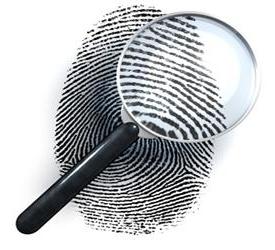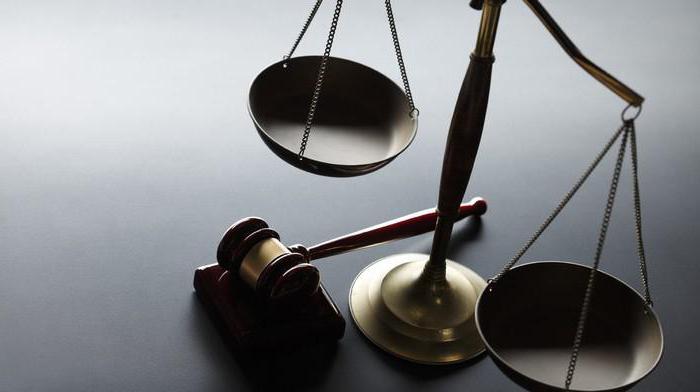The concept of evidence is disclosed in Article 74 of the Code of Criminal Procedure. In accordance with the norm, they refer to any factual information on the basis of which the authorized bodies and officials establish the absence or presence of a criminal offense, the guilt of the subject who committed it, as well as other significant circumstances. During production are used initial and derivative, direct and indirect evidence. Let's consider them in more detail. 
General information
The CPC contains an indication of the evidence, always of legal value to the case. These include the circumstances that characterize the event: the place, time, method of committing a crime, etc. The facts that determine the guilt of a person, his motives, aggravating or mitigating punishment are of legal value. The nature and extent of the damage caused by the crime, the conditions that contributed to its commission are taken into account.
Classification
Depending on the subject direct and indirect evidence. This classification is based on the following. Direct facts are those that reflect at least one component of the subject of proof, any circumstance enshrined in Article 73 of the Code of Criminal Procedure. All other information is considered intermediate. Indirect evidence is such a fact that does not contain information about the crime, personality characteristics of the suspect, his guilt, the amount of damage, etc. Such information, of course, is relevant to the case. However, it only helps to establish circumstances that are to be proved. They primarily include the crime event itself, the determination of the person who committed it, guilt in the form of negligence or intent, etc.
Directly related information
Direct evidence indicates that the subject committed a crime or exclude the person’s involvement in the act. The circumstances enshrined in Article 73 in paragraphs 1 and 2 provide grounds for receiving answers to the questions listed in Art. 229 Code of Criminal Procedure. Information of the accused, pleading guilty and explaining when, where, for what reasons, under what circumstances he committed a crime, acts as direct evidence. In the same quality, the person’s information about how they were hit on the victim is considered.
When applying direct evidence, the main task is to verify their accuracy. It must be established whether the subject is telling the truth or not. As for the significance of the reported information for the proceedings, it is obvious. To determine the reliability of each evidence should be considered in conjunction with other information. No information has any strength advantages. In this regard, it is inadmissible to consider a guilty plea to be the "main" evidence. 
Important point
A key feature of direct evidence is that it contains the circumstance to be proved. The accused tells about the preparation for the crime, its commission, the witness or eyewitness of the event speaks about the actions of the attacker and the victim. In all such cases, the information provided by a person directly indicates circumstances (one or more) that are subject to proof and, as a result, are included in the main fact.
Indirect evidence in criminal proceedings
They contain information on circumstances that preceded, accompanied or followed the event. Based on their totality, one can formulate a conclusion about whether there was a crime, or whether the suspect is guilty. In the murder case indirect evidence example - belonging to the accused. It is rather difficult to establish the circumstances of a crime using this kind of information.
Indirect evidence helps to identify not the circumstances themselves listed in Article 73 of the Code of Criminal Procedure, but only the facts related to them. Only with their complex analysis can we conclude that these circumstances exist or are absent.
For example, in the case of theft of property, the subject pleaded not guilty, but there is evidence from a witness who saw the suspect heading to the crime scene. In addition, objects belonging to the victim were found in the person’s home. In the room where the crime was committed, fingerprints of the accused were found, which is confirmed by the protocol and expert opinion. All of these facts - circumstantial evidence. They cannot serve as the basis for an unambiguous conclusion that the act was committed precisely by the suspect. Each indirect evidence taken separately presupposes different interpretations of its connection with established circumstances. The task of persons conducting the production is to identify common links between the information received and the event. 
Specifics of use
When applying direct evidence to identify circumstances, it is enough to check the integrity of the source, to make sure that the content of the information is valid. Accordingly, it is much easier to conclude that a fact exists. Indirect evidence is information whose connection with circumstances is not obvious. When using them, it is necessary not only to confirm the good quality of the source and the reliability of the information, but also to carry out the difficult work of formulating the correct conclusions from the complex of data obtained. The situation is complicated by the fact that circumstantial evidence allow an ambiguous interpretation of their meaning. Therefore, in all cases, a comprehensive analysis of the information is required.
Analysis specificity
So that you can use circumstantial evidence in fact, it is necessary to establish the reliability of their content. The authorized employee conducting the proceedings must determine whether the witness is telling the truth about hostility in the relationship between the victim and the accused, whether the suspect’s fingerprints are present on the weapon, and so on.
You should also establish a connection between the information received and the perfect act. Thus, the hostile relationship between the accused and the victim may not lead to a crime, traces of the subject’s shoes were found at the scene, but this does not mean that he was there, since another person could put on his shoes.
Accordingly, when using indirect information, it is necessary not only to identify any circumstance, but also to determine its relationship with the established facts. Its forms can be different: spatio-temporal, causal, and so on. 
rules
From the above, we can draw the following conclusions:
- Indirect evidence it is necessary to investigate only in aggregate. Only with their comprehensive analysis can we draw reliable conclusions.
- Indirect evidence must have an objective connection with each other and with the established state of affairs (crime picture).
- The complex of information should allow making such a reasonable conclusion, which excludes another explanation of the circumstances, doubts that the event was exactly the way it was established on the basis of this information.
These are the basic rules in accordance with which indirect evidence. In civil proceedingsAs a rule, information directly related to the dispute is used. Typically, the plaintiff presents specific documents, materials indicating a particular violation in connection with which a conflict arose.
Types of Indirect Evidence
The following types are considered the most common:
- Apagogical. This is proof by contradiction. It involves first proving the antithesis, bringing it to a contradiction with the established truth. In fact, the work boils down to establishing the falsity of the antithesis.
- Separation proof. It involves the establishment of falsity of all theses, with the exception of one.

The nature of the reproduction of information
On this basis, the evidence is divided into the original and derivatives. The latter includes information that reflects established circumstances through a fact or data carrier that was not involved in the proceedings, but at the same time it could be (at least theoretically) attached to the materials.
Derivative evidence is second-hand information. This may be the subject’s testimony about a crime that he himself did not personally observe, but about which he learned from another person.
Initial evidence is information obtained from the original source. These include, in particular, evidence of the crime received from the witness, information about the perpetrator, other circumstances that the subject personally observed. The initial evidence included the original documents, things, objects, tools found directly at the scene. The information that they contain is recorded in the object itself without additional links. 
Check
Upon receipt of second-hand information, the primary source, in particular the eyewitness of the event, must be established without fail. He needs to be interrogated. It should be understood that an eyewitness will provide more accurate and complete information about the event than someone who knows about circumstances from the stories of others. Such indications are easier to verify, respectively, they are more reliable.
Nuances
Derived evidence cannot be confused with the testimony of a subject who cannot name the source of information. If it is impossible to establish it, then the information loses its meaning. Accordingly, unverified information should be rejected. This statement is confirmed by the 74th article of the CPC. According to the norm, if the witness reporting the information cannot indicate its source, then it cannot act as evidence. A similar rule is established for the victim. 
Conclusion
The desire of the authorized bodies to use the initial evidence whenever possible does not mean that the information obtained from the "second hand" cannot lead to the correct conclusions. A categorical refusal to use them may lead to the fact that the court will lose important information. Derivative evidence plays a key role in some cases (especially if the original data sources are lost).